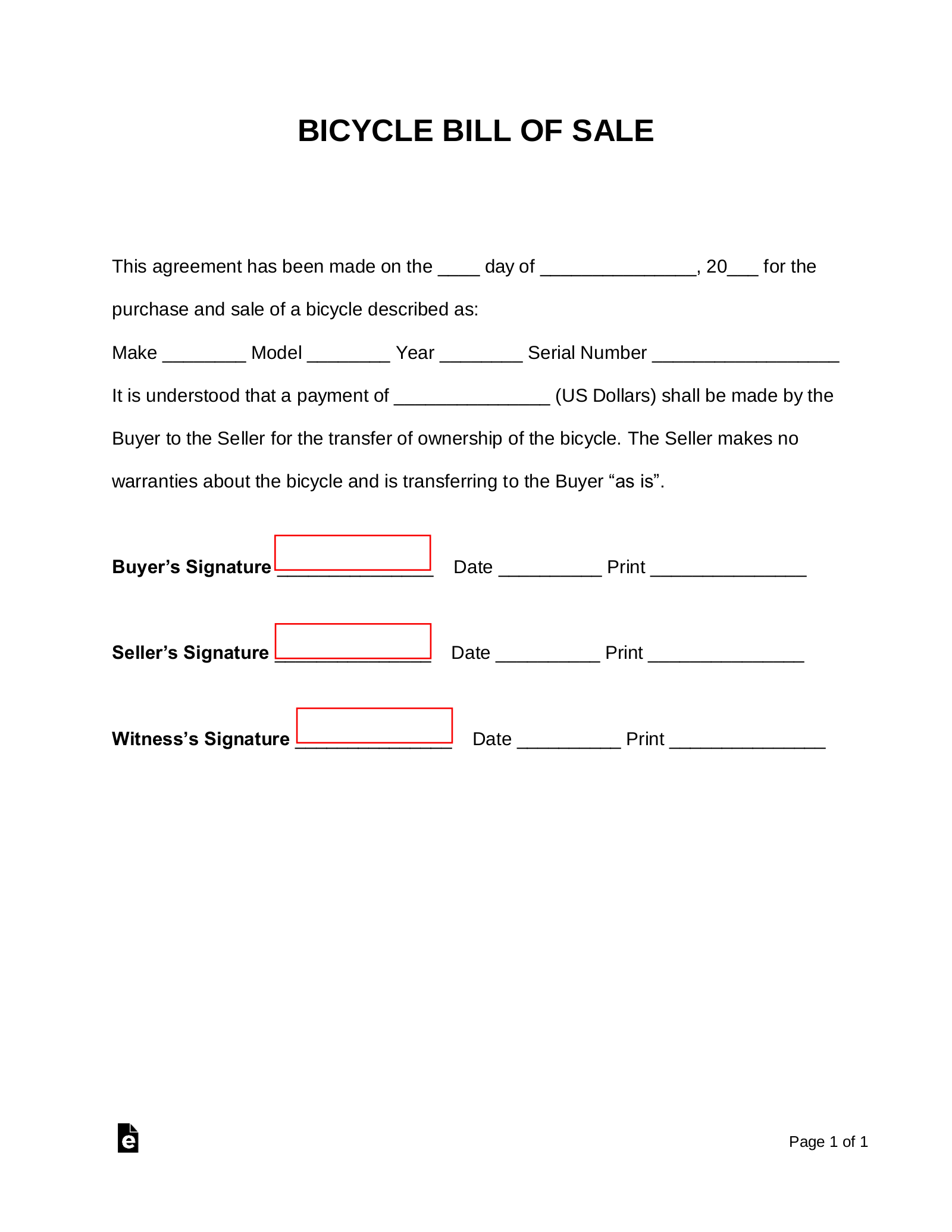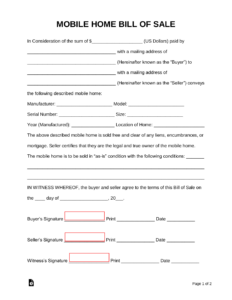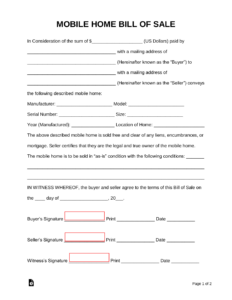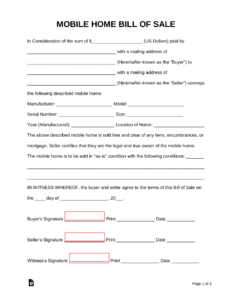Thinking about buying or selling a bicycle? Whether you’re upgrading your ride, finding a new home for an old favorite, or simply getting into cycling, a seemingly small detail can make a big difference: a bill of sale. It might sound overly formal for a bicycle, but having proper documentation is surprisingly important, offering peace of mind and protection for both the buyer and the seller. It’s not just for cars or houses; any significant transaction benefits from a clear, written record.
In the world of private sales, where trust is built on a handshake and a quick cash exchange, things can sometimes go awry. Without a written agreement, disputes over condition, price, or even ownership can arise, leaving one or both parties in a difficult spot. That’s where a solid bill of sale comes in handy, providing a clear outline of the transaction. And thankfully, you don’t have to be a legal expert to draft one, especially when a readily available bill of sale template for bicycle transactions is at your fingertips.
Why You Absolutely Need a Bill of Sale When Buying or Selling a Bicycle
A bill of sale isn’t just a piece of paper; it’s a legal document that formally transfers ownership of an item from one party to another. While it’s common practice for vehicles like cars or boats, its importance often gets overlooked when dealing with items like bicycles. However, given that bikes can range from a few hundred dollars to several thousands, treating the transaction with the same level of seriousness as a larger purchase is a wise decision. It’s your official record, proving that a transaction occurred on a specific date, for a specific item, and at an agreed-upon price.

For the buyer, a bill of sale provides crucial proof of ownership. Imagine purchasing a beautiful, expensive bicycle only to have it stolen a few months later. When the police recover it, how will you prove it’s yours without a receipt? A bill of sale serves as that undeniable proof, helping you reclaim your property. It also protects you from unknowingly buying stolen goods. By recording the seller’s information and the bike’s unique serial number, you create a paper trail that helps ensure the legitimacy of the sale and safeguards you against future claims of theft.
Sellers, too, benefit immensely from using a bill of sale. Once you’ve sold your bicycle and handed it over, you want to be free of any future liability or disputes. Without a formal document, a buyer could potentially claim the bike wasn’t as described, had hidden defects, or even that they never received it. A signed bill of sale explicitly states the condition of the bike at the time of sale (often “as-is” for private transactions) and confirms the transfer of ownership, absolving you of any responsibility once the transaction is complete. It’s your legal record that you no longer own that particular bike.
Ultimately, using a bill of sale removes ambiguity and provides a clear, concise record of the transaction. It solidifies the agreement between both parties, preventing misunderstandings and providing a reference point should any questions arise later. It transforms a casual exchange into a professional, documented transfer, benefiting everyone involved and providing undeniable peace of mind.
Key Details Your Bicycle Bill of Sale Should Include
- Date of the Sale: The exact day, month, and year the transaction took place.
- Buyer’s Information: Full legal name, current address, and contact information.
- Seller’s Information: Full legal name, current address, and contact information.
- Bicycle Description: Comprehensive details including make, model, year (if known), color, frame size, and, most critically, the serial number. The serial number is unique to each bicycle and is vital for identification and proof of ownership.
- Sale Price: The agreed-upon monetary amount for which the bicycle is being sold, clearly stated in both numbers and words.
- Payment Method: How the payment was made (e.g., cash, bank transfer, PayPal).
- Condition of the Bicycle: A brief statement on the bike’s condition at the time of sale, often including an “as-is” clause for private transactions, meaning the buyer accepts the bike in its current state without warranty from the seller.
- Signatures: Spaces for both the buyer and seller to sign, along with the date of their signatures, indicating their agreement to the terms.
- Optional: Witness Signatures: While not always necessary, having a neutral third party witness and sign the document can add an extra layer of validity.
Getting Your Hands on the Right Bill of Sale Template for Bicycle
Finding a reliable bill of sale template for bicycle transactions is simpler than you might think. The internet is a treasure trove of resources, offering various templates that you can download and customize. Reputable legal websites, government consumer protection sites, and even some bicycle enthusiast forums often provide free templates designed to cover all the essential bases. When choosing a template, look for one that is clear, easy to understand, and allows for all the necessary information specific to a bicycle sale, especially fields for the bike’s serial number and condition.
Once you’ve found a suitable template, the next step is filling it out accurately and completely. Don’t rush this part. Every piece of information, from the full names and addresses of both parties to the detailed description of the bicycle, needs to be precise. Double-check all spellings and numbers. An incomplete or incorrect bill of sale might not hold up if a dispute arises later, negating the very protection it’s meant to provide. Pay particular attention to the bicycle’s serial number; this unique identifier is paramount for theft recovery and proving legitimate ownership.
When describing the bicycle, be as thorough as possible. Mention the brand, model, frame size, color, and any significant accessories included in the sale. If there are any known defects or issues, it’s always best to be transparent and note them in the “condition” section. This honesty builds trust and helps prevent future disagreements. For instance, you might write, “Bicycle sold as-is with minor scratches consistent with normal use, and tires that may need replacing soon.” This clear declaration protects the seller and informs the buyer fully.
Finally, once the template is filled out and both parties are ready, ensure that both the buyer and seller sign the document. It’s highly recommended to make at least two copies: one for the buyer and one for the seller. Some people prefer to meet in a public place for the exchange of the bicycle, money, and signed documents for added safety. This careful, documented approach ensures that both parties walk away from the transaction feeling confident and secure, knowing they have a legitimate record of the sale.
By taking the time to use a proper bill of sale, you’re making a smart move that safeguards your interests. It clarifies the terms of the sale, provides a vital paper trail for ownership, and ultimately contributes to a smoother, more transparent transaction. It’s a small effort that yields significant peace of mind for both buying and selling your beloved two-wheeler.



